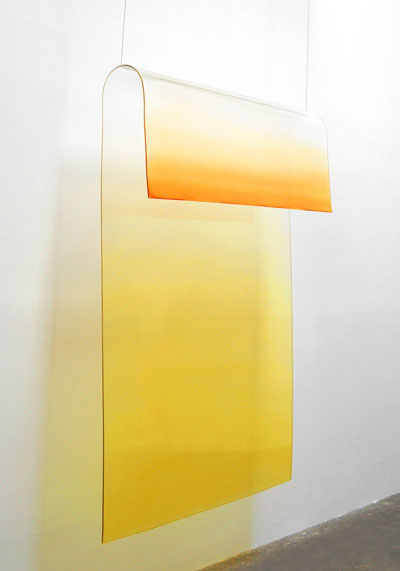
Light and Space
Art movement
Light and Space denotes a loosely affiliated art movement related to op art, minimalism and geometric abstraction originating in Southern California in the 1960s and influenced by John McLaughlin. It was characterized by a focus on perceptual phenomena, such as light, volume and scale, and the use of materials such as glass, neon, fluorescent lights, resin and cast acrylic, often forming installations conditioned by the work's surroundings. Whether by directing the flow of natural light, embedding artificial light within objects or architecture, or by playing with light through the use of transparent, translucent or reflective materials, Light and Space artists made the spectator’s experience of light and other sensory phenomena under specific conditions the focus of their work. They were incorporating into their work the latest technologies of the Southern California-based engineering and aerospace industries to their develop sensuous, light-filled objects. Turrell, who has spread the movement worldwide, summed up its philosophy in saying, "We eat light, drink it in through our skins."
The nature of the works was reflected in the title of the exhibition at UCLA which introduced the emerging movement in 1971: "Transparency, Reflection, Light, Space: Four Artists". The show presented the work of Peter Alexander, Larry Bell, Robert Irwin, and Craig Kauffman. Other artists associated with the movement are Ron Cooper, Mary Corse, John McCracken, Bruce Nauman, Maria Nordman, Eric Orr, Helen Pashgian, James Turrell, DeWain Valentine, and Doug Wheeler. A famous group of abstract color theory artists were influenced by the Light and Space Movement, notably: Frederick Spratt, Phil Sims, Anne Appleby, and David Simpson. Notable contemporary artists practicing in the Light and Space Movement include Olafur Eliasson, Ann Veronica Janssens, Jennifer Steinkamp, Gisela Colon, Sophia Collier and Todd Williamson.
Irwin and Turrell, for instance, investigated the phenomenon of sensory deprivation (which influenced the development of their similarly spare light works) as part of the art-and-technology program initiated by the Los Angeles County Museum of Art in 1967. Wheeler’s RM 669 (1969) comprises curved white walls encased by a floor and ceiling that seem to recede with every step one takes toward the square of light positioned on the far wall, rendering viewers unable to fix their eyes on any surface. For his series of works on the theme of alchemy, Eric Orr has used natural light as well as blood and fire in his environments that produce extreme retinal responses. Mary Corse's large white-on-white glass canvases have glass micro-beads embedded in the acrylic paint to create a surface that shifts dramatically with the light. Helen Pashgian created acrylic spheres, globes with an unreal glow, seemingly lighted from within. More recently, Gisela Colon, who has been recognized in ArtForum as a next generation light and space artist, has created "irregularly shaped wall mounted acrylic orbs... scarab-like objects achieve their iridescence via the play of natural light, yet the sculptures appear to change color as one moves around them, as if lit by multihued bulbs."
This is a part of the Wikipedia article used under the Creative Commons Attribution-Sharealike 3.0 Unported License (CC-BY-SA). The full text of the article is here →
Wikipedia: https://en.wikipedia.org/wiki/Light_and_Space